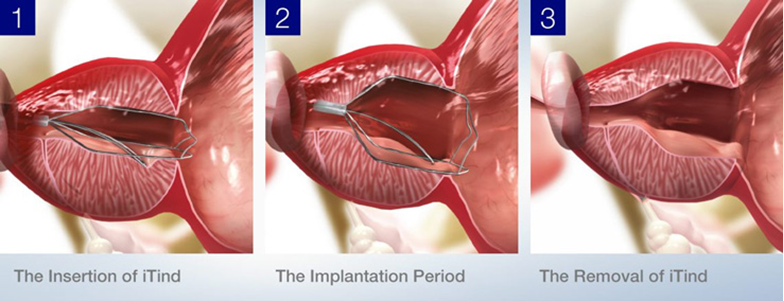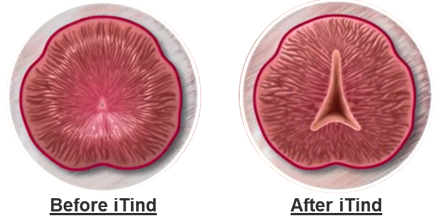iTind
How iTind works:
What happens on the day of the procedure?
What to expect while iTind is in place?
What happens after 5-7 days?
iTind
The iTind procedure is a minimally invasive therapy for benign prostatic hyperplasia (BPH), offering an alternative to surgery, drugs, and permanent implants.
How iTind works:
The iTind procedure reshapes the anatomy of the prostatic urethra, gently creating a wider opening for urine to flow freely, without burning or cutting out tissue, and without leaving behind a permanent implant. The treatment is straightforward with rapid return to daily life, does not require overnight hospitalisation, and has none of the side effects associated with prescription medication, routinely catheter free, Additionally, one of the main advantages of the iTind procedure is the preservation of sexual and ejaculatory functions.
What happens on the day of the procedure?
The following is intended as a general overview. Your experience may differ. Please talk to your urologist about potential risks and questions you may have about the procedure.
- iTind will be implanted in the operating theatre by your Urologist.
- The procedure will be carried out either under a short-acting sedation or according to individual circumstances.
- You will typically go home within a few hours of the procedure, when you have passed urine satisfactorily. You should arrange for a ride home.
- Most patients experience a rapid improvement in urine flow and are released home without a catheter.
- If you are unable to pass urine after the procedure, a catheter may be temporarily inserted to help relieve your bladder. The catheter will usually be removed after a few hours and you will be able to go home.
What to expect while iTind is in place?
After the iTind device has been inserted, you will be asked to stay in the hospital for a couple of hours before you can return home.
- You may be given an antibiotic to help avoid infection.
- For the 5-7 days while the iTind is in place, you will have a suture running from the iTind out of your penis, to which the suture will be taped.
- Please do not cut or damage the suture. It will be used to remove the device.
- While the device is in place, you should not engage in any sexual activities or do any strenuous exercise (including heavy lifting, cycling and running) or activities such as sitting on a lawnmower or working with other vibrating equipment.
The following side effects can occur during the implantation period, but should resolve as soon as the iTind is removed:
- Slight burning during urination
- Light blood in your urine and possibly the passing of some small clots. This usually resolves over the first 2-3 days following implantation of the device.
- A greater frequency and urge to urinate. The device will be applying pressure in the area where your bladder meets your prostate. This is usually felt most strongly during the first two or three days, after which the feeling begins to subside. Drinking little and often can help relieve some of these symptoms.
- The feeling of pressure and the presence of a foreign object in the area of your perineum. Most patients experience this as being a little uncomfortable, especially when sitting. Some patients experience stronger discomfort, and your urologist may prescribe painkillers or a nonsteroidal anti-inflammatory drug if this happens.

What happens after 5-7 days?
- Your urologist will remove the iTind device using a flexible silicone catheter.
- The iTind device will be removed either in the operating room
- The procedure will be carried out either under a short-acting sedation or local anesthetic, according to individual circumstances.
- Should you be unable to urinate after the removal, a catheter may be temporarily placed to help empty your bladder. The catheter will typically be removed when you have passed urine satisfactorily.
- You may return to normal activities 1-2 days after the device is removed.
- Mild episodes of blood in your urine are possible for a few days to one week after the procedure, but this will resolve on its own.

After 5-7 days the device is completely removed, aiming to leave a wider opening through which urine can flow, and to relieve the symptoms of BPH.
